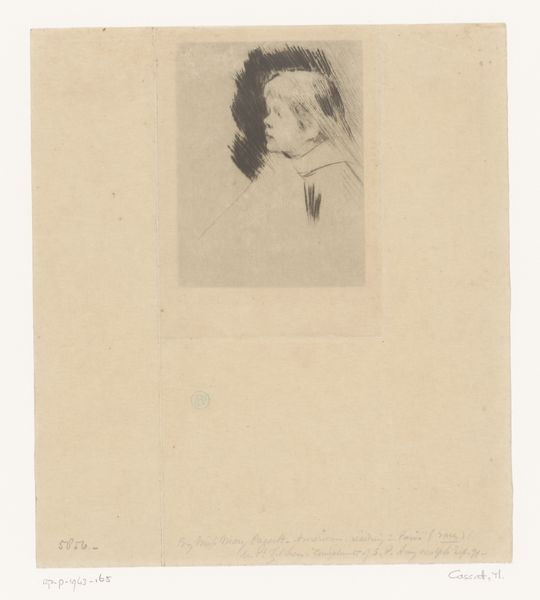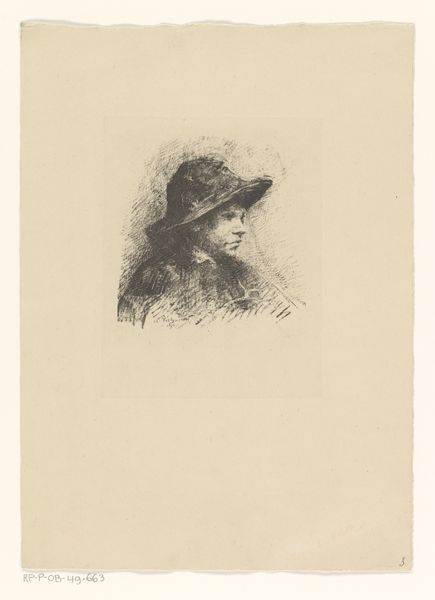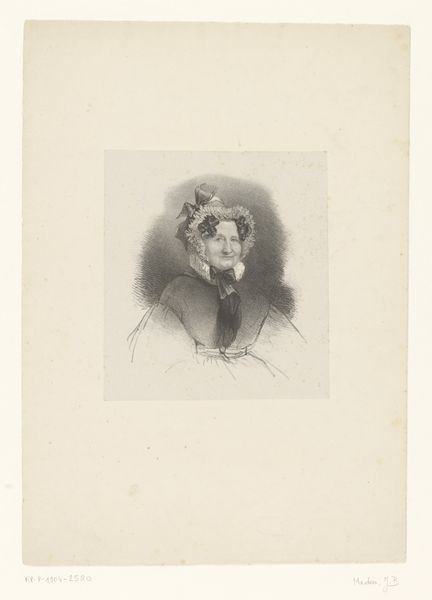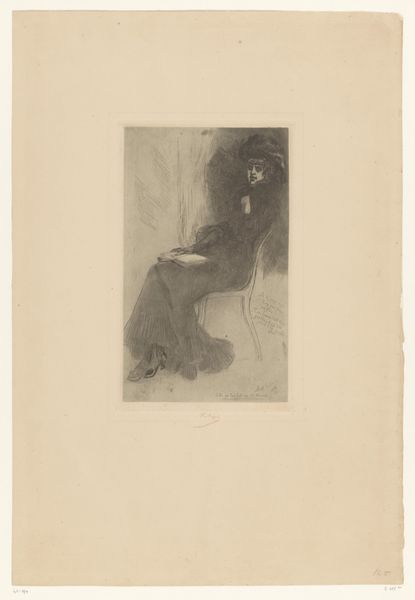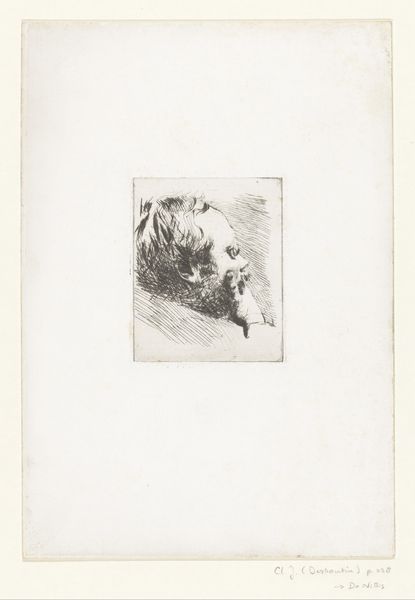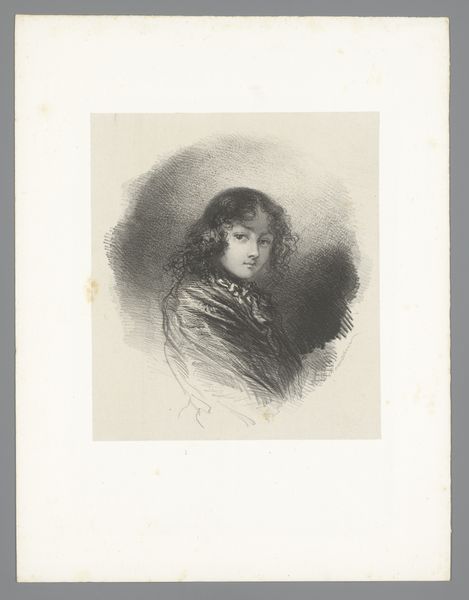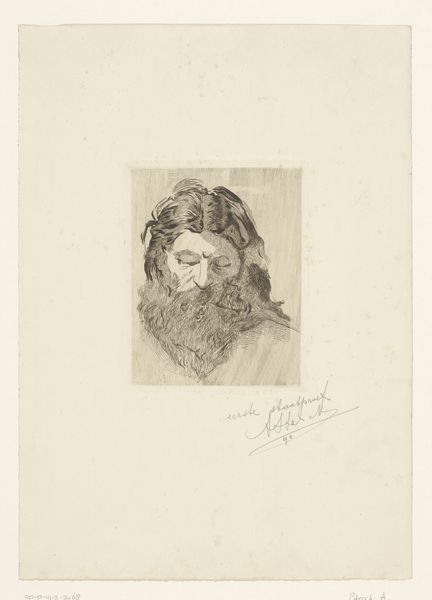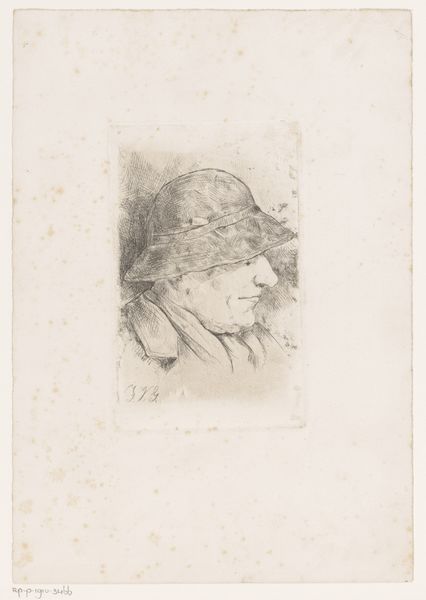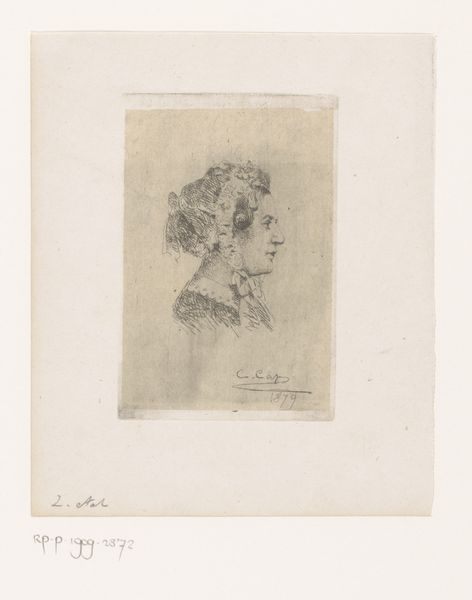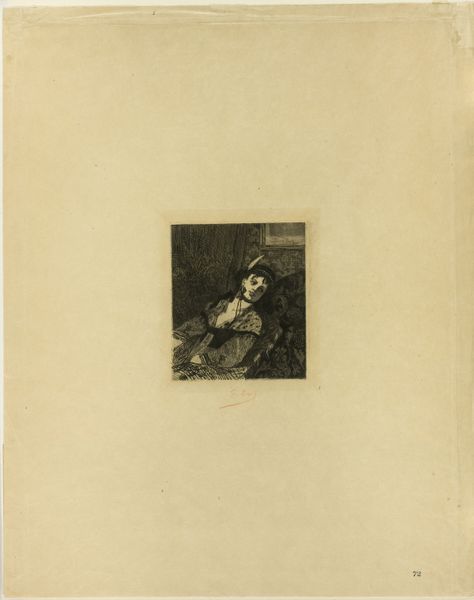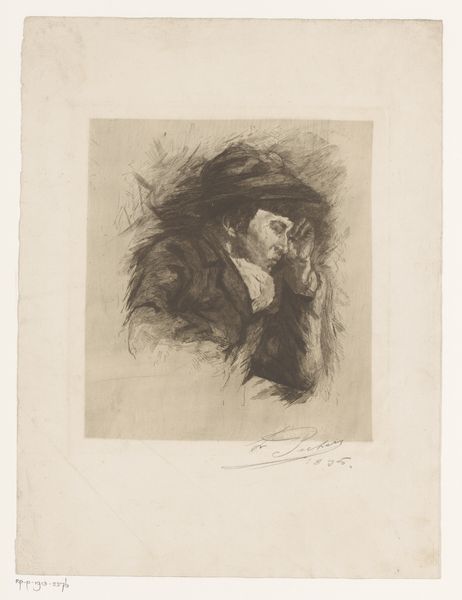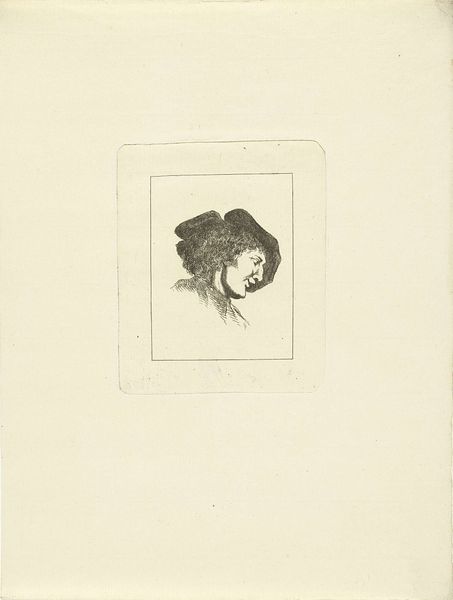
Dimensions: height 101 mm, width 76 mm
Copyright: Rijks Museum: Open Domain
Editor: Here we have Gustave Joseph Biot's etching, "Dame met waaier en lorgnet," created sometime between 1843 and 1905. I’m struck by the portrait's intimacy and the sitter’s seemingly cool detachment. What do you make of this piece, considering the period in which it was created? Curator: Well, what immediately strikes me is the societal function of portraiture at that time. Consider the rise of the middle class in the 19th century and their aspiration to emulate the aristocracy. The etching, as a relatively accessible medium, allowed for a wider distribution of images, and thus ideas about status. Who do you think was the target audience for such prints? Editor: Perhaps those who couldn't afford painted portraits but still desired to participate in the visual culture of the time, hinting at upward mobility. What does the woman's attire, the fan and lorgnette, suggest about social performance? Curator: Exactly. The fan and lorgnette were potent symbols. They allowed the sitter to both see and be seen selectively, projecting an image of cultivated leisure. It speaks volumes about the staged nature of social interactions. Have you considered where this print might have circulated and how? Editor: That's fascinating. Perhaps in magazines, personal sketchbooks, or even as individual prints sold in galleries? It's interesting how such a small piece can tell us so much about social aspirations and the performance of identity. I will never look at seemingly simple prints in quite the same way. Curator: Indeed. Recognizing how prints like this were embedded in a network of social practices helps us move beyond purely aesthetic appreciation and delve into the real cultural work this image performed.
Comments
No comments
Be the first to comment and join the conversation on the ultimate creative platform.

